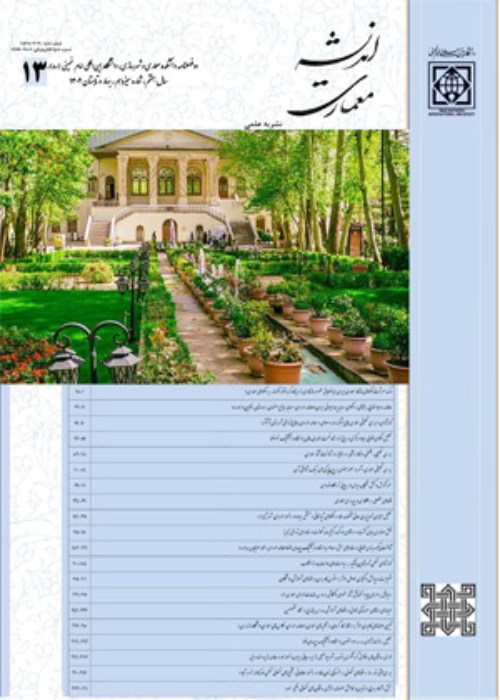Explain the architectural design strategies of nursing homes from the perspective of satisfaction Case Study: Nursing Homes ("Ata", "Marhamat" and "Aftab") in Ardabil
The world's population is rapidly aging and much of this change is taking shape in the first century of the third millennium and in developing countries. Being old, is one of the stages of human life, which is considered a natural process of life. A process that causes changes in a person's physical abilities and mental needs that require special attention. Elderly health and providing them with a proper place of residence is crucial and if the nursing home is to continue to operate in Iran In the current form, mental health and their physical needs will be neglected. Therefore, we should look for ways to improve the housing of the elderly and their satisfaction with living spaces. As people get older, health promotion behaviors become more important, especially maintaining performance and independence and quality of life. Creating a home for elderly literally means not only a shelter but also a passionate social environment through an environmentally conscious design that recognizes their needs and desires, helping them stay active. This study investigates the impacts of spatial quality factors and seeks to understand their role on nursing home satisfaction and seeks to answer the following key questions:Is there a significant difference between individual characteristics in terms of satisfaction and spatial quality? What are the factors of spatial quality affecting the realization of satisfaction? And what is the impact of spatial dimensions and indicators on satisfaction?
The present study is based on descriptive-analytical strategies that were conducted through field survey, observation, interview and questionnaire. First, through a library study, the concept of spatial quality factors is examined. In this regard, four criteria were considered for spatial quality components, as follows:Activities and framework, Comfort, Socialization, Accessibility, Similarly, satisfaction components such as sense of belonging, place identity, social participation, etc. were considered and after preparing the research model, a questionnaire was prepared. 5-level Likert scale was used to measure the variables. Spss26 software was used for data analysis at both descriptive and inferential levels. The reliability and validity of the questionnaire were assessed by Cronbach's alpha before any information processing. The value of 0.937 was obtained indicating significant reliability of the questionnaire. The questionnaire consisted of 88 questions, one of which was negative and the others positive.
Findings show that the two individual characteristics of gender and education have a significant difference on satisfaction, and there is a strong correlation between the dimensions of spatial quality and satisfaction. Interpretation of Linear Regression Table:The regression table shows that there is a linear relationship between all the components of spatial quality with nursing home satisfaction. The R Square value of 0.62 indicates that spatial quality indices can account for 62% of satisfaction changes. The regression model with a value (P <0.05) indicates that the model used in this study has a good predictor for measuring satisfaction. To create the regression equation, the standardized regression coefficient is used to accurately predict the value of the dependent variable. The extracted equation for this research is as follows: Satisfaction = 16.6 + 0.255 (spatial quality)
In line with the purpose of the study, the effect of individual factors and four main factors of environmental spatial quality on the satisfaction of residents of nursing homes in Ardabil, was analyzed. The results showed that the two individual characteristics of gender and education have a significant difference on satisfaction, and there is a strong correlation between the dimensions of spatial quality and satisfaction, that the two dimensions of comfort-imagination and activity-body with coefficients of 0.767 and 0.740, respectively had the most direct effect on the satisfaction of the nursing home, on the other hand, the existence of indirect effects and significant shows the importance of the objective-mental dimensions of the quality of space, which the access-communication and activity-body dimensions have the most indirect effects. Also, the three indicators of spatial personalization, walking and exercise and comfort have the highest impact on the level of elderly satisfaction with the environment. Finally, based on the findings, the research conclusions are presented in the form of architectural design strategies.
- حق عضویت دریافتی صرف حمایت از نشریات عضو و نگهداری، تکمیل و توسعه مگیران میشود.
- پرداخت حق اشتراک و دانلود مقالات اجازه بازنشر آن در سایر رسانههای چاپی و دیجیتال را به کاربر نمیدهد.




